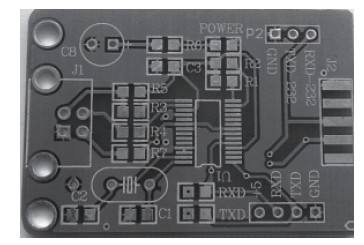The critical temperature at which the PCB substrate melts from a solid state to a rubbery fluid is called the Tg point, which is the melting point. The higher the Tg point, the higher the temperature requirements of the sheet during pressing, and the harder and more brittle sheet will be pressed, which will affect the quality of the mechanical drilling (if any) in the subsequent process and the electrical properties during use to a certain extent. characteristic.
The melting point of a substance is the temperature at which the solid state and the liquid state of the pure substance are in equilibrium under a certain pressure, that is to say, the chemical potential of the pure substance in the solid state and the liquid state under the pressure and the melting point temperature are equal, and for For solid-state systems (nano-systems) with extremely high degrees of dispersion, the surface part cannot be ignored. The chemical potential is not only a function of temperature and pressure, but also related to the particle size of the solid particles, which is a thermodynamic first-order phase transition process. .
There are two different situations in which the melting point changes with pressure. For most substances, the melting process is a process of increasing the volume. When the pressure increases, the melting point of these substances increases; for substances like water, unlike most substances, the volume of ice melts into water decreases. (The same is true for metal bismuth, antimony, etc.) When the pressure increases, the melting point of ice decreases.
Reference material: melting point
Tg: Glass Transition Temperature, the glass transition temperature, is the temperature at which the glassy substance transforms between the glassy state and the high elastic state (usually softened). In the PCB industry, the glassy substance generally refers to the resin or Dielectric layer composed of resin and glass fiber cloth.

Extended information:
How to distinguish the authenticity of PCB board
1. Look for regular big brands
If you want to buy real PCB boards, you have to go for regular brand boards. After all, the brand is the carrier of quality and strength. If a big brand wants to have a long-term development in the industry, it must pay attention to its own brand image. Take the risk of doing something that will damage your reputation.
2. Look at the environmental protection mark level
To distinguish the authenticity of the PCB material, you can look at the grade of the environmental protection label. Generally, when I buy the board, there will be a code on the side of the board, and the code will clearly indicate the environmental protection level of the building material. We can make a basic judgment from this. .
3. Look at the plate price
Since PCB grade has the advantage of low formaldehyde emission, PCB grade plates will definitely be much more expensive than E1 and E2 grades. Therefore, if you decide to buy PCB grade plates, you must not just think about saving money and greet cheap plates. Know that "cheap is not good, good goods are not cheap".
4. Look at the quality inspection report of the board
1. The critical temperature at which the substrate melts from a solid state to a rubbery fluid is called the Tg point, which is the melting point
2. The higher the Tg point, the higher the temperature requirement of the plate during pressing, and the pressed plate will be harder and brittle, to a certain extent.
Affect the quality of the mechanical drilling (if any) in the subsequent process and the electrical characteristics during use.
3. The Tg point is the highest temperature (°C) at which the substrate maintains rigidity. In other words, ordinary PCB substrate materials will not only soften,
Phenomena such as deformation and melting are also manifested in a sharp drop in mechanical and electrical properties
4. The general Tg of the board is above 130 degrees, the High-Tg is generally greater than 170 degrees, and the medium Tg is about greater than 150 degrees; the Tg of the substrate is improved, and the heat resistance, moisture resistance, chemical resistance and stability of the printed board Sex and other characteristics will be improved and improved. The higher the TG value, the better the temperature resistance of the board, especially in the lead-free tin spraying process, where high Tg applications are more common.
Product name: glass transition temperature
Pinyin: bolihuawendu
English name: glass transition temperature
English abbreviation: T G
Explanation: The temperature at which a polymer changes from a highly elastic state to a glass state, which refers to the temperature at which an amorphous polymer (including the non-crystalline part in a crystalline polymer) changes from a glass state to a highly elastic state or from the latter to the former. It is the lowest temperature at which the macromolecular segment of the amorphous polymer can move freely, usually expressed by TG. There is no fixed value, and it often changes with the measurement method and conditions. An important process index for polymers. Above this temperature, the polymer exhibits elasticity; below this temperature, the polymer exhibits brittleness, which must be considered when used as plastics, rubber, synthetic fibers, etc. For example, the glass transition temperature of polyvinyl chloride is 80°C. However, it is not the upper limit of the working temperature of the product. For example, the working temperature of rubber must be above the glass transition temperature, otherwise it will lose high elasticity.